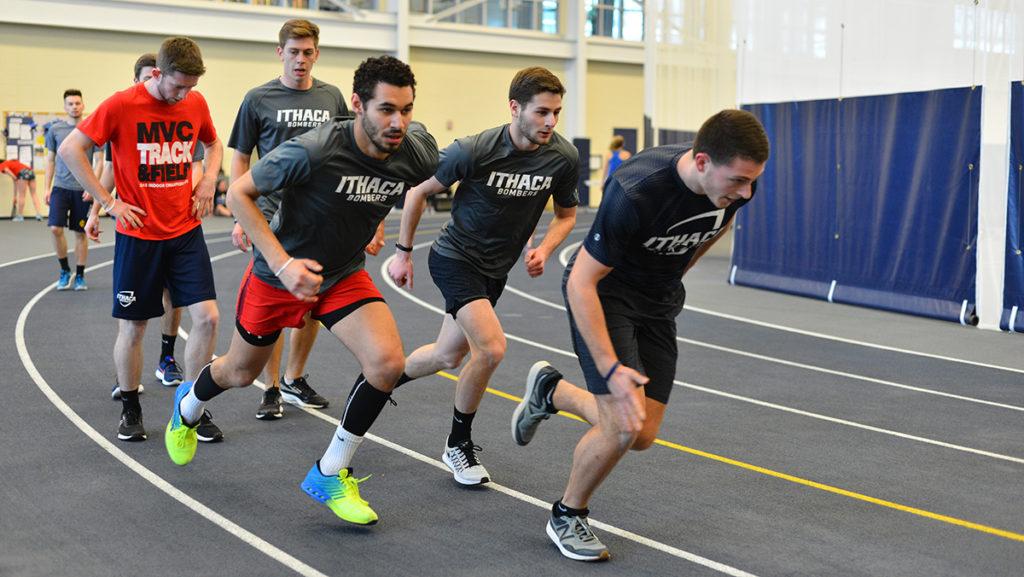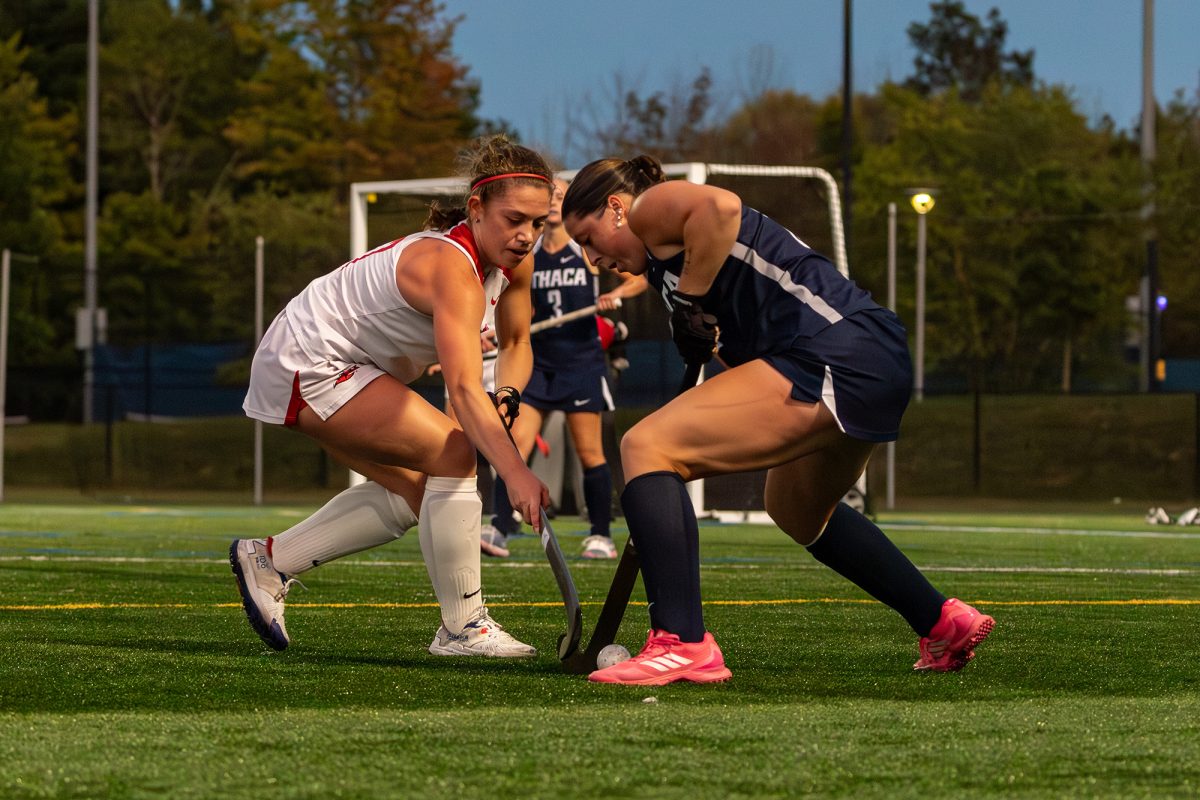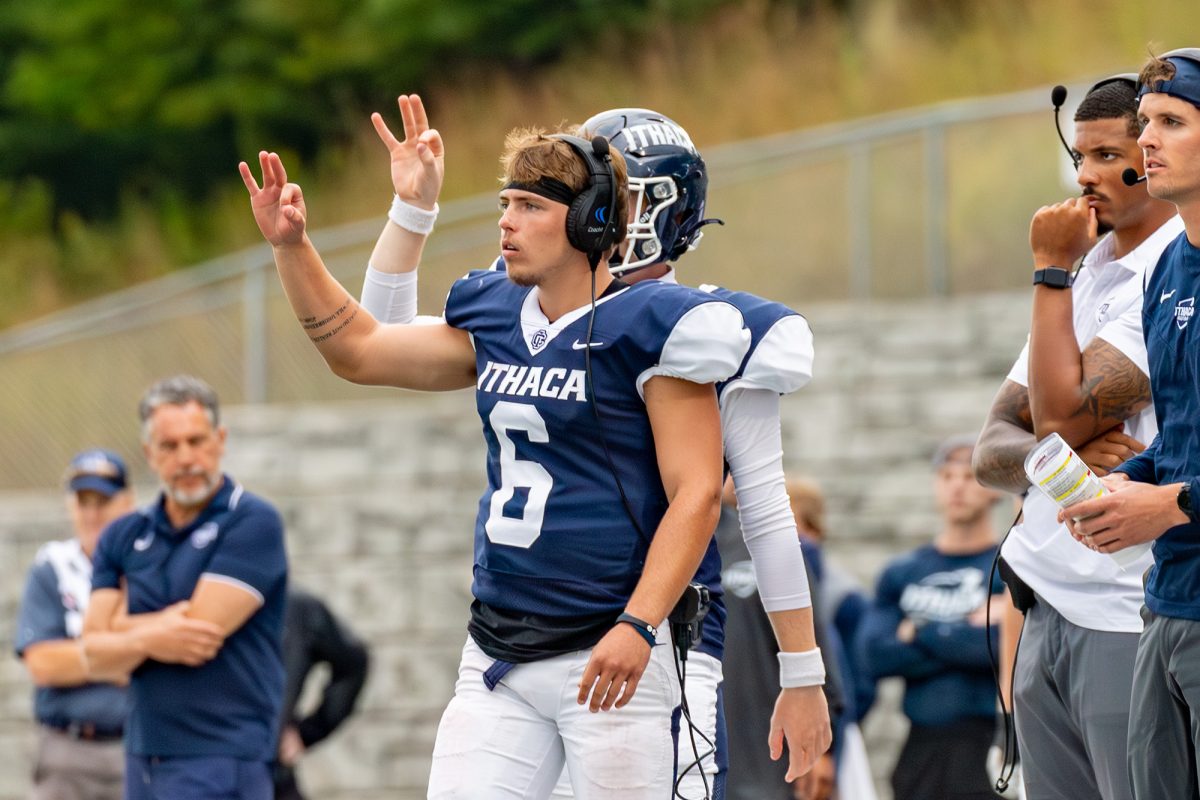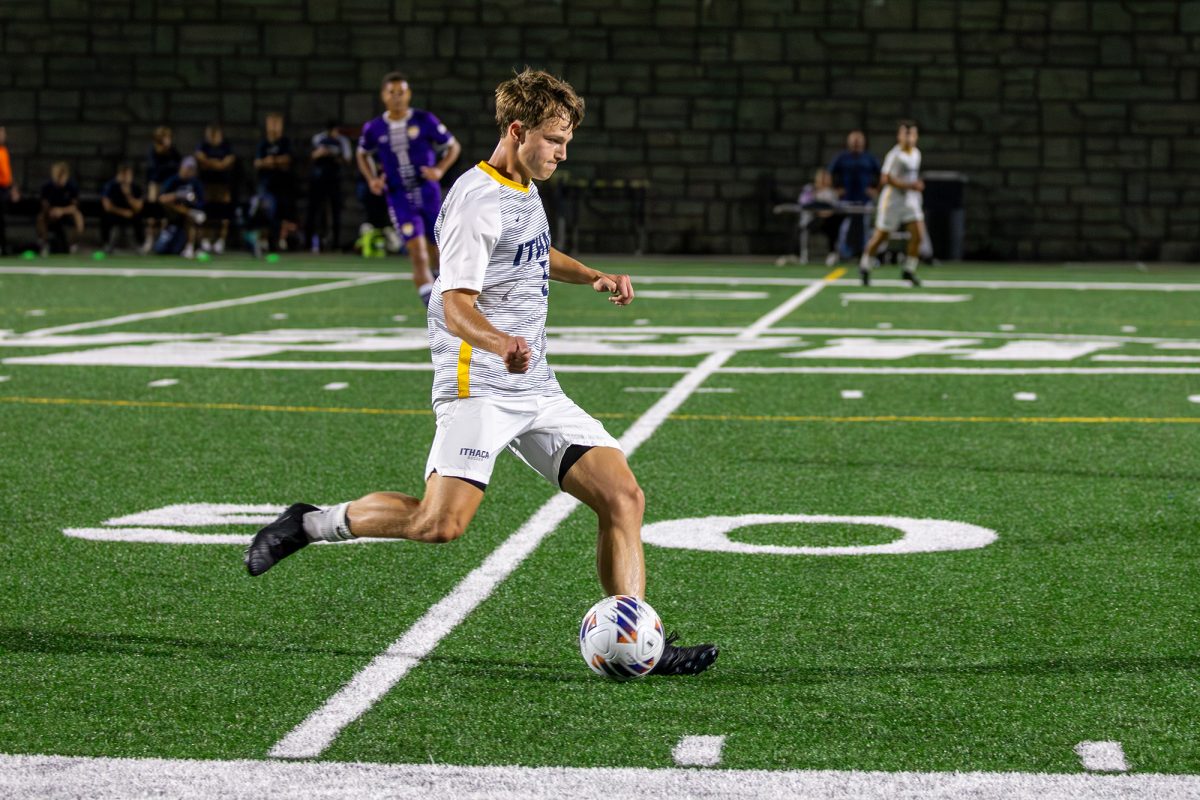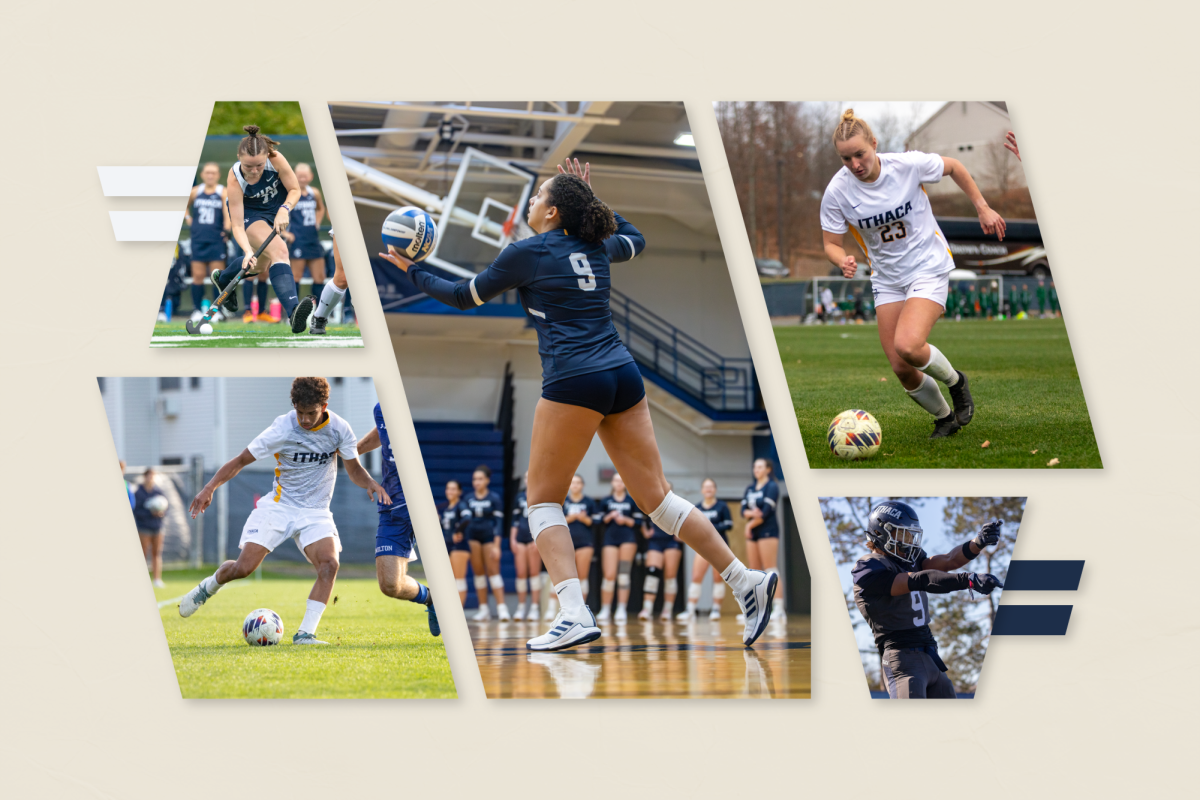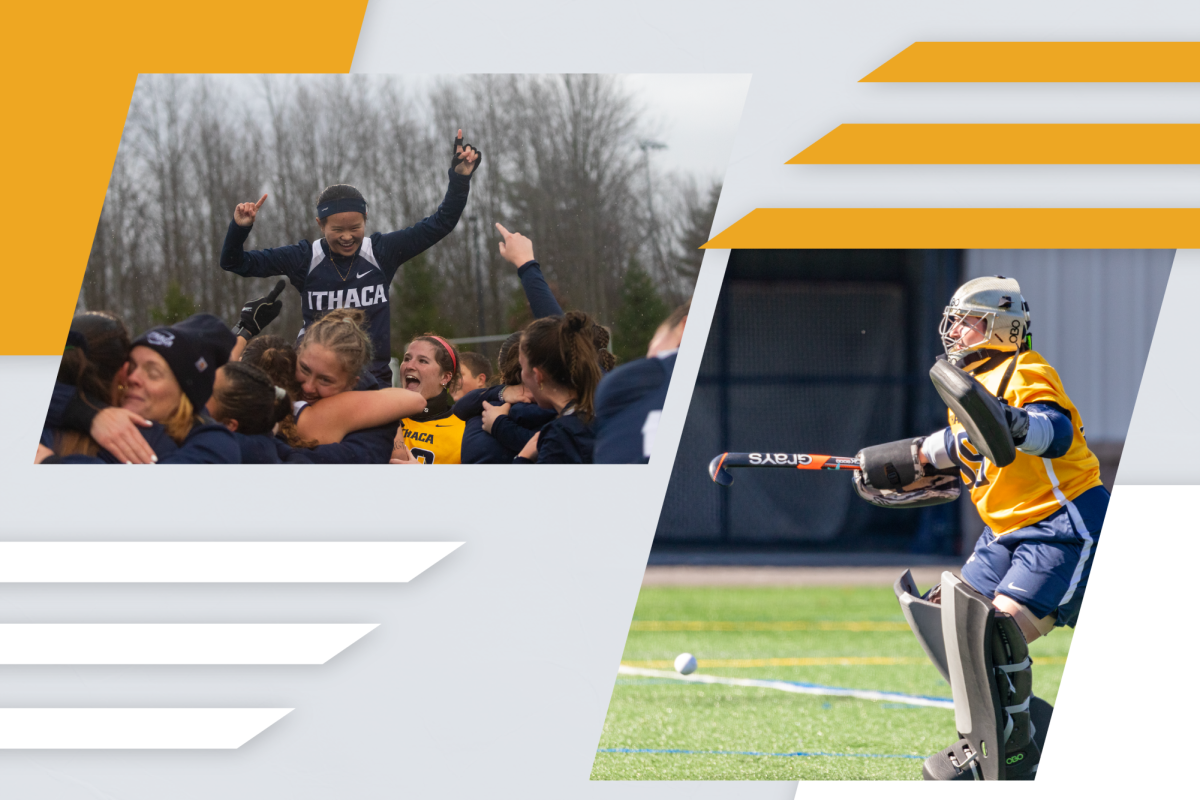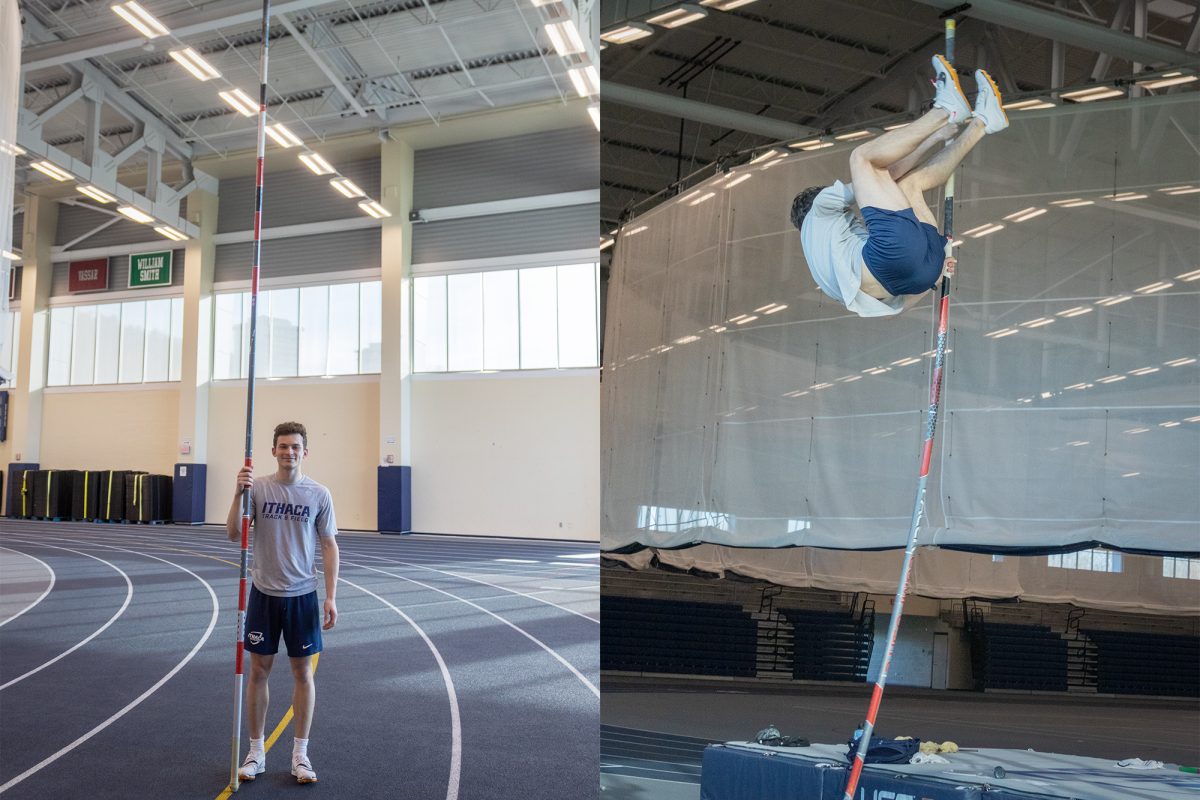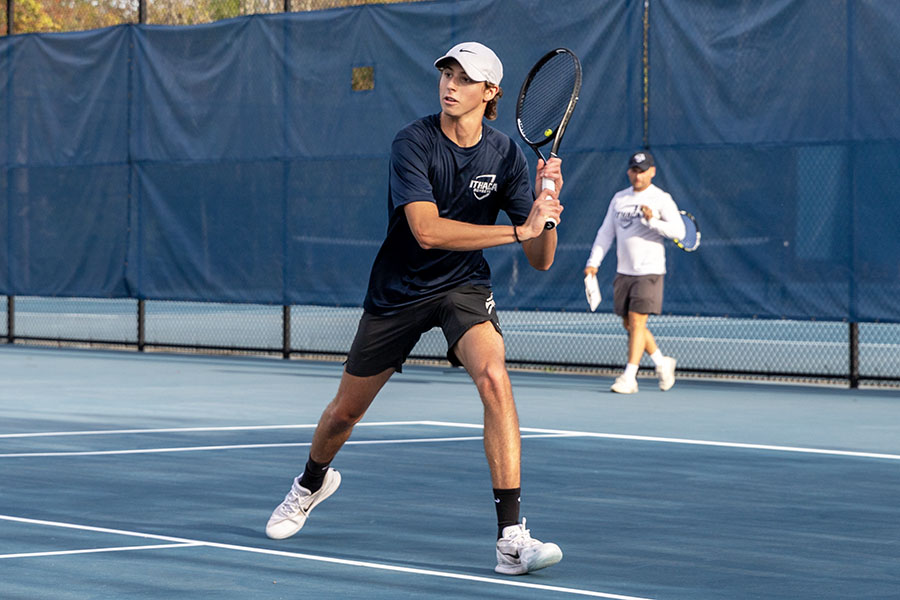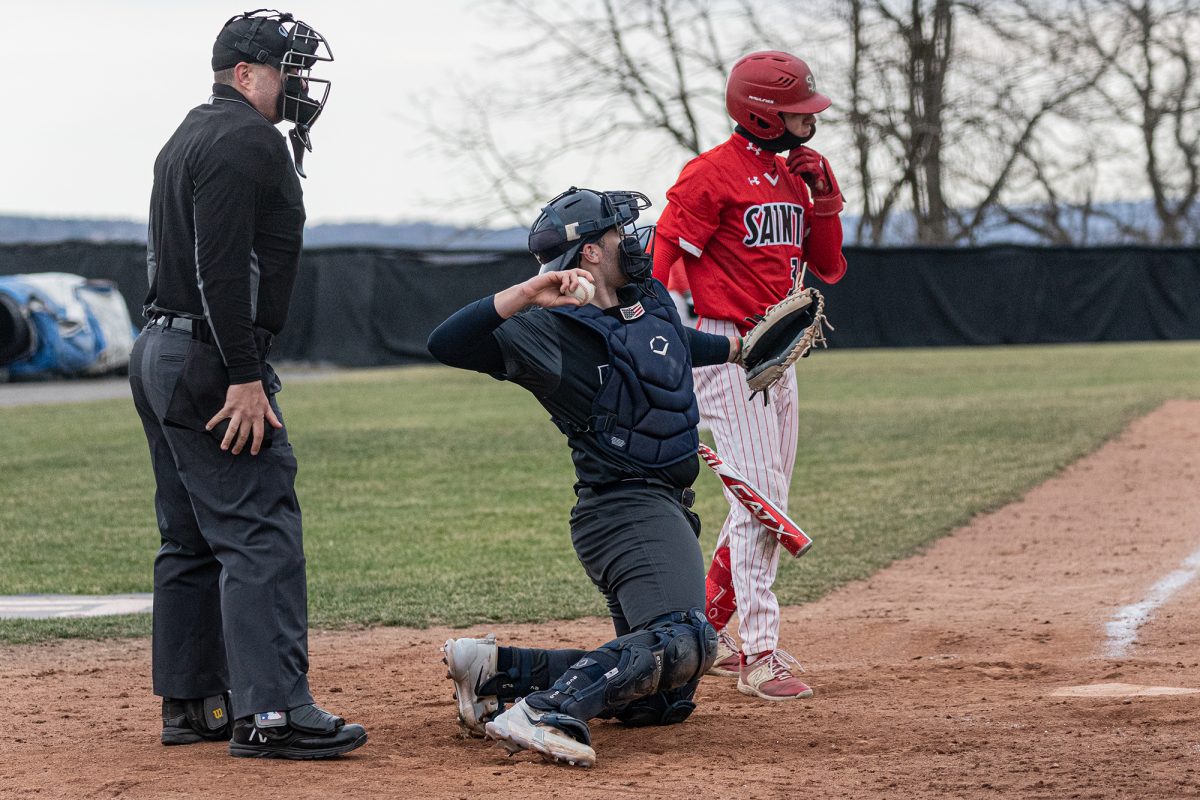Despite the persistent upstate New York winter, the Ithaca College track and field athletes are training to better themselves and prepare for a season of hard competition, and weather can impact the way this is done.
Colleges have policies about state temperatures at which practices and competitions are no longer allowed to be outside. For the college’s track and field team policy, coaches are asked to consider terminating or rescheduling activities zero degrees and below. At temperatures of 15 degrees and below, they are asked to consider modifying activities to limit exposure, and at temperatures 25 and below, coaches require additional protective clothing during outdoor activities.
In bitterly cold weather, muscles respond more slowly and need more warming up so athletes can do what they are being asked to do. In hot weather, athletes must make sure they are properly hydrating their bodies so that they do not overheat and can still perform the way they need to.
Dehydration causes problems that affect performance. It can cause blood volume to decrease, increase heart and breathing rates and increase necessary recovery time, making athletes need more rest than they may have time for.
Running, specifically, in cold weather poses the possibility of issues like frostbite, pulled muscles and shortness of breath, resulting in less stamina for racing.
Sophomore sprinter Peter McGowan said hot conditions can affect performance just as much as cold conditions can.
“I am a sprinter, and for the body to perform best you need it to be warm,” McGowan said. “So yes — it does affect me if it’s very cold. In very cold conditions, you have to remember to do a little bit more warm-up than usual, and for extremely hot conditions, you need to stay hydrated and out of the sun as much as possible.”
Jennifer Potter, head coach of the women’s team, said the college designs uniforms with cold weather in mind. They give the athletes long tights, three-quarter tights, long sleeves and hats so that they prepare for cold-weather practices and meets.
“We have to handle each event group differently,” Potter said. “For throwers, I have the box of Hot Hands already ready for outdoor track so they can keep their hands warm at practice or meets. Sprinters tend to have more issues in cold weather because if their muscles aren’t warm enough, they can pull something and have an injury to a hamstring or something. That’s a really common thing: hamstrings or quads, if they aren’t warm enough.”
Freshman distance runner Madelyn McConnon said the team sees more pulled-muscle injuries during cold weather training, and so as a preventative measure, the team extends warm-ups.
“We usually extend warm-up, or we warm up inside and then bundle up and then go outside,” McConnon said.
Distance athletes train outside about three times a week, weather permitting, Potter said.
McGowan said the college’s track team will begin outdoor training when the weather gets warmer — probably when it gets to be 50 degrees — but when it rains or snows, they’ll go inside the Athletics and Events Center again.
During hot or cold conditions, athletes do whatever they can to help their bodies perform well.
“Layers on layers on layers,” senior pole-vaulter Amanda Zaput said. “I over–pack always for my track meets. I bring every article of Ithaca clothing I own, and I put it on. I also pack hand and feet warmers to keep in my bag and use during warm-ups in case the circulation in my hands starts to act up.”


